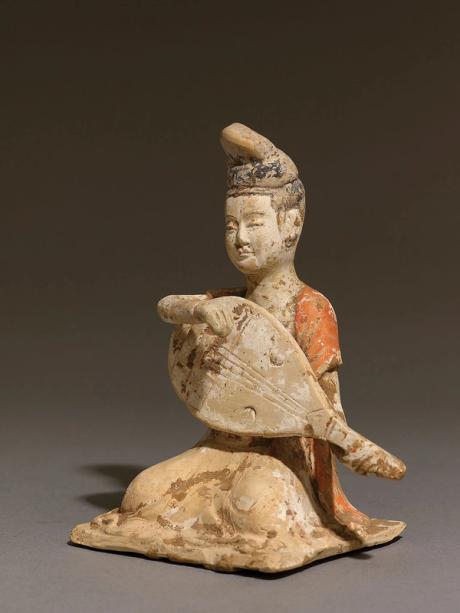
Museums are continually searching for ancient counterparts to contemporary phenomena, and the British Museum’s new show Silk Roads appears to be just that: an exploration of the ancient transnational trade route, bringing luxury fabrics from China to Central Asia, the Middle East and Western Europe—and plenty of products going the other way. The Silk Road, which endured from the second century BC until the 15th century, was a precursor to our current conception of the globalised society, with its exchange of ideas and people as well as material goods.
Sue Brunning, the curator of European Early Medieval collections at the British Museum, cites Peter Frankopan’s book The Silk Roads (2015) as crystallising interest in the subject, with the Covid-19 pandemic as another factor. “It was prompted with a lot of discussions and thought and reflections upon being part of a global community; we all experienced aspects of that, particularly in recent years with Covid and what it’s like to be part of that community,” Brunning says.
Romantic adventures
“The idea of romantic adventures in ‘exotic lands’ and cross-cultural interactions is already very alluring,” she continues. “But what we are trying to do in the show is to include the less tangible things that you can’t see and touch. Ideas and religions and technologies and knowledge and languages are spreading in all directions.”
Brunning is one of three lead curators of the show, reflecting the huge geographical expanse: it reaches from Helgö in Sweden, where a sixth-century carved Buddha, likely to have originated in what is now Pakistan, was found in 1956, to Dunhuang in western China, a settlement where a huge cache of ancient manuscripts was uncovered at the beginning of the 20th century (which is the subject of a companion show, A Silk Road Oasis: Life in Ancient Dunhuang, at the British Library, see p61). While Brunning is taking care of Europe, Luk Yu-ping (the museum’s curator for Chinese paintings, prints and Central Asia) and Elisabeth R. O’Connell (Byzantine world curator) are looking after complementary areas.
Cross-cultural collaboration
“We wanted to get a wider view of our subject matter and get out of our intellectual and academic silos to look across cultures,” Brunning says. “The scope that we’re attempting here is the type of thing that can only be achieved with a collaboration across different areas of expertise. Having three [lead] curators is pretty unprecedented.”
Perhaps inevitably there are questions over the ethics of the acquisition of much of the British Museum’s holdings in the area, particularly items from Dunhuang that came via the collection of the archaeologist Aurel Stein. Quite how Stein came to acquire the material in the first place is still controversial, with claims of looting and demands for repatriation—although new research suggests that transfer was at least in part legitimate.
Stein’s artefacts are “considered to be critical witnesses to the history of the Silk Roads and that’s why they [are] a key part of the exhibition”, Brunning says. “Of course, these are discussions that are very wide-ranging and that reach all of us in the museum.”
• Silk Roads, British Museum, London, 26 September-23 February 2025


